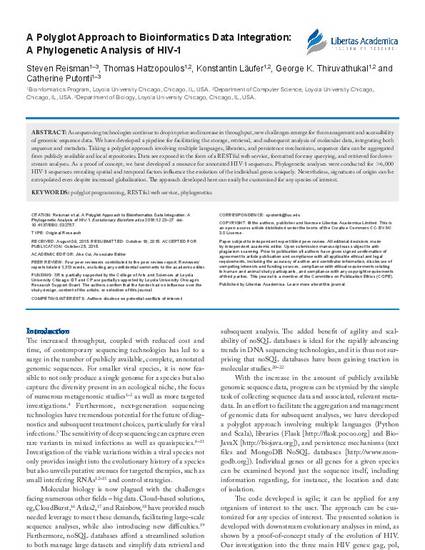
As sequencing technologies continue to drop in price and increase in throughput, new challenges emerge for the management and accessibility of genomic sequence data. We have developed a pipeline for facilitating the storage, retrieval, and subsequent analysis of molecular data, integrating both sequence and metadata. Taking a polyglot approach involving multiple languages, libraries, and persistence mechanisms, sequence data can be aggregated from publicly available and local repositories. Data are exposed in the form of a RESTful web service, formatted for easy querying, and retrieved for downstream analyses. As a proof of concept, we have developed a resource for annotated HIV-1 sequences. Phylogenetic analyses were conducted for >6,000 HIV-1 sequences revealing spatial and temporal factors influence the evolution of the individual genes uniquely. Nevertheless, signatures of origin can be extrapolated even despite increased globalization. The approach developed here can easily be customized for any species of interest.
© 2015 The authors, publisher and licensee Libertas Academica Limited
